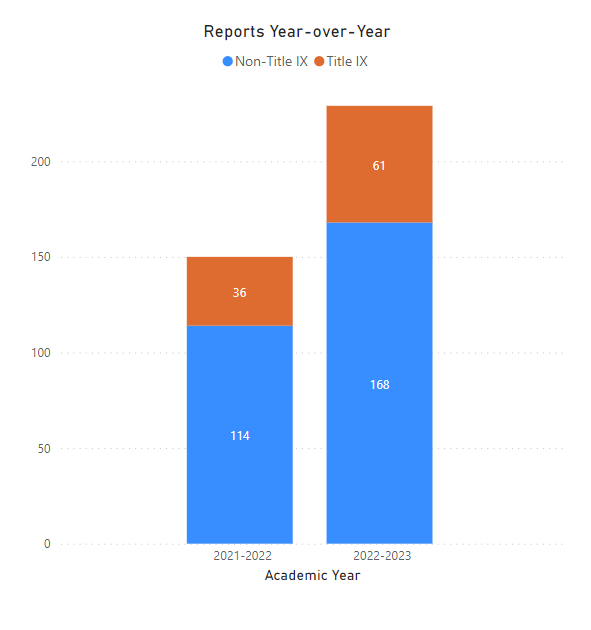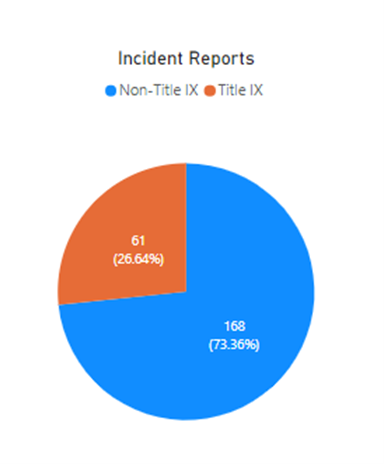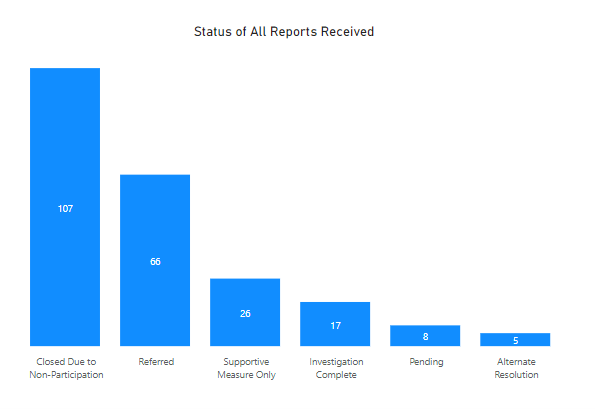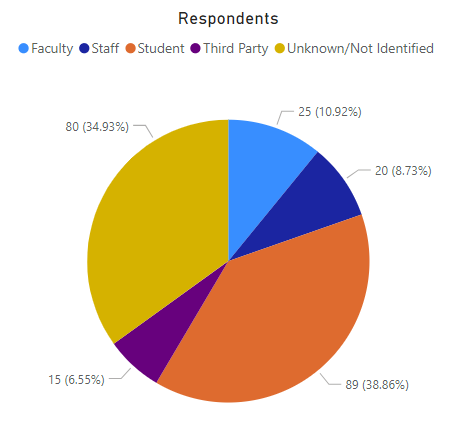Annual Data on Reports of Sexual Misconduct
These annual reporting summaries were created by the Data Subcommittee of the Committee on Sexual Assault & Harassment Prevention to share reports of sexual misconduct within our community. The purpose of sharing this information is to provide increased visibility around the work of the Dean of Students’ Office of Judicial Affairs and the Equal Opportunity Office. It is the intention of the Subcommittee to continue to expand this data and considers the current iteration to be a springboard for future expanded reporting.
Please note, that this summary data does not fully convey the complexity and details of the reports received by BU, as BU remains committed to protect the privacy of parties involved.
BU promotes and fosters a culture of reporting and encourages our community members to report occurrences using the Incident Report Form. Any member of our community can use this report, which can be completed by a person who experienced, witnessed, heard about, or otherwise knows of a possible incident.
The graphics below depict reports specifically pertaining to sexual misconduct. BU is committed to preventing sexual misconduct within our community and continues to address all concerns of sexual misconduct, both those that do and do not fall under the legal definition of Title IX.
As the response by the Equal Opportunity Office or Office of Judicial Affairs depends on the potential policy violation, please refer to our flowcharts to learn more about the differences in the procedural processes. You may also wish to review BU’s policies and procedures.
In these graphs, Title IX Sexual Misconduct refers to cases that meet the current legal definition. Non-Title IX Sexual Misconduct refers to cases of sexual misconduct that do not meet the Title IX definition. The large number of Non-Title IX Sexual Misconduct reports reflects BU’s commitment to prevention and resolution.


*Academic Years 2021-2022 and 2022-2023
Academic Year 2022-2023 Data

The above graph depicts the nature of the report as provided directly by the reporter.
The below graph shows what happens to a report after it is received by either the EOO or OJA. The Complaint Resolution Process is voluntary. Any report received where the impacted individual chooses not to engage with the process is considered Closed Due to Non-Participation. Any report received where the alleged conduct does not rise to the level of a potential policy violation or resides within the jurisdiction of another University office is Referred to the appropriate entity for additional follow-up.

Status of Complainants and Respondents
Complainant refers to the individual impacted by the potential conduct, and Respondent refers to the individual who engaged in the alleged conduct. The graphics below show the affiliation of Complainants and Respondents within our community from reports received during the 2022-2023 Academic Year.


A “Third Party” refers to a person other than an Employee or a Student. Examples include employees of auxiliary organizations, unpaid interns, volunteers, independent contractors, vendors and their employees, and visitors. BU’s ability to take action against a Third Party Respondent may be limited.
Outcome of Investigations
Reports received by BU may result in an investigation and/or a hearing depending on the potential policy violation. There are many reasons why a report may not proceed to an investigation, including the Complainant’s choice not to pursue an investigation, allegations not rising to the level of a potential policy violation, or reports of conduct that fall outside of the offices’ policies. The graphic below describes the reports that proceeded to an investigation and the outcome.
